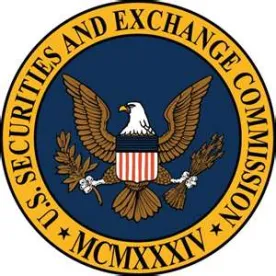The Securities and Exchange Commission (SEC) issued proposed regulations[1] earlier this month that would amend three of the disclosure items required under Regulation S-K:[2] Item 101 (Description of Business), Item 103 (Legal Proceedings), and Item 105 (Risk Factors). The proposed amendments seek to modernize and streamline the disclosure process by applying a principles-based approach,[3] as opposed to the more prescriptive[4] current regime.
The move to a more principles-based approach is motivated by a desire to de-duplicate disclosures by public companies and make them more adaptable for registrants and more meaningful for investors. The changes also reflect a recognition by the SEC that certain thresholds have lagged behind the rate of inflation. Here is a breakdown of the details:
Item 101(a) – General Development of the Business
Item 101(a) of Regulation S-K requires a description of the general development of the registrant’s business over the preceding five years (or such shorter period as the registrant has been engaged in business).[5]
Currently, disclosure under Item 101(a) requires that a registrant provide the following information:
-
Year and form of organization;
-
Nature and results of any bankruptcy, receivership or similar proceedings with respect to the registrant or any of its significant subsidiaries;
-
Nature and results of any other material reclassification, merger or consolidation of the registrant or any of its significant subsidiaries;
-
Acquisition or disposition of any material amount of assets other than in the ordinary course of business; and
-
Any material changes in the mode of conducting the business.
The proposed amendments would eliminate mandated annual disclosure of this information, requiring instead that registrants only provide material[6] updates, if any, from a reporting period. To address concerns that this principles-based approach would make it too difficult for investors to find historically material information, the proposed amendments also provide that registrants hyperlink to the most recently-filed disclosure that, together with any update, would present a full discussion of the general development of the registrant’s business.
In addition, the amendments would do-away with the five-year timeframe and refine the list of types of information a registrant might need to disclose. Specifically, two topics would be deleted—year and form of organization and any material changes in the mode of conducting the business—and one (italicized below) would be added. The proposed, now non-exclusive list would call for information regarding:
-
Transactions and events that affect or may affect the company’s operations, including material changes to a previously disclosed business strategy);
-
Bankruptcy, receivership, or any similar proceeding;
-
Nature and effects of any material reclassification, merger or consolidation of the registrant or any of its significant subsidiaries; and
-
Acquisition or disposition of any material amount of assets otherwise than in the ordinary course of business.
Item 101(c) – Narrative Description of the Business
Item 101(c) of Regulation S-K requires a description of the registrant’s business.
Currently, disclosure under Item 101(c) requires that a registrant provide the following information:
-
Principal products produced, services rendered, and methods of distribution;
-
New products or segments;
-
Sources and availability of raw materials;
-
Patents, trademarks, licenses, franchises and concessions held, and the importance thereof;
-
Seasonality of the business;
-
Practices relating to working capital items;
-
Dependence on certain customers;
-
Dollar amount of backlog orders believed to be firm;
-
Business subject to renegotiation or termination of government contracts;
-
Competitive conditions;[7]
-
Material effects of compliance with environmental laws; and
-
Number of persons employed by the registrant.[8]
The proposed amendments would remove three of these items from the now non-exclusive list of disclosure topics—new products segments, practices relating to working capital items,[9] and dollar amount of backlog orders believed to be firm—and would subsume raw materials and intellectual property under a single “resources material to a registrant’s business” topic. Note: although three topics would be eliminated, the SEC has indicated that registrants would still have to include information on these topics to the extent material.
The amendments would also reorient the focus of two of the disclosure topics: compliance with environmental laws and number of employees. Compliance with environmental laws would be expanded to include the material effects of compliance with any laws or other regulations that apply to a business, not just environmental laws. Similarly, the “number of employees” disclosure would be replaced by a requirement to disclose a description of “human capital resources,” which would call for any information as to “measures and objectives that address the attraction, development, and retention of personnel.”
Item 103 – Legal Proceedings
Item 103 of Regulation S-K requires a description of any material pending legal proceedings, other than routine litigation incidental to the business, to which the registrant is a party or the registrant’s property is subject.[10]
Currently, disclosure under Item 103 requires that a registrant provide the following information:
-
Name of the court or agency in which proceedings are pending;
-
Date proceedings were instituted;
-
Principal parties;
-
Description of the factual basis alleged; and
-
Relief sought.
In an effort to avoid repetitive disclosures, the proposed amendments provide that some or all of the required information may be provided vis-à-vis hyperlinks to other legal proceedings disclosures (e.g., the notes to financial statements under U.S. GAAP, the MD&A, or Item 105). In addition, with respect to environmental proceedings in particular, the threshold given in Instruction 5.C would be increased from $100,000 to $300,000, to adjust for inflation.[11] Note: the SEC determined that retaining a prescriptive threshold in this context was appropriate because the amount of sanctions may be important for investors in assessing environmental compliance, it provides a useful benchmark for registrants, and it promotes comparability among registrants.
Item 105 – Risk Factors
Item 105 of Regulation S-K requires a description of “the most significant factors that make an investment in the registrant or offering speculative or risky.”[12]
Currently, disclosure under Item 105 requires that a registrant set forth each risk and discuss how the risk affects the registrant or the securities being offered, and explicitly prohibits inclusion of generic risks that could apply to any registrant or any offering. Nonetheless, many public companies are sensitive to litigation risk that compels them to trend toward comprehensive.
In an effort to curb the tendency of registrants to be over-inclusive in their risk factor disclosures, the proposed amendments would require a summary risk factor disclosure for risk factor disclosures that exceed fifteen pages. It would also require that registrants organize risk factor disclosures under relevant headings, in particular that any factors not specifically relevant to the registrant be relegated to a section at the end of the risk factor disclosures called “General Risk Factors.”
In addition, the proposed amendments would change “most significant factors” to be “material factors”; “material” in this context would mean “information required to those matters to which there is a substantial likelihood that a reasonable investor would attach importance in determining whether to purchase the security.”[13]
SEC Soliciting Comments
In this regard, the SEC has solicited comments on a number of issues, including:
-
Appropriateness of the proposed prescriptive thresholds and built-in adjustment factors (i.e., $300,000 in environmental sanctions and the 15-page trigger for a summary requirement).
-
Utility of hyperlinks to avoid duplicative disclosures.
-
Whether and how to amend other forms and sections in light of these proposed amendments (i.e., Item 101(h), Form 20-F, and Form S-4).
-
How to define “business strategy.”
Any comments are due on or before October 22, 2019, sixty days from publication in the Federal Register(August 23, 2019). Stay tuned, as there is surely more to come.
[1] See Modernization of Regulation S-K Items 101, 103, and 105, 84 Fed. Reg. 44358 (proposed Aug. 23, 2019) (to be codified at 17 C.F.R. pt. 229, 239, and 240).
[2] See 17 C.F.R. Part 229 et seq.
[3] A “principles-based” approach is one where the regulatory requirements provide registrants with flexibility to determine whether information is material to an investment decision and thus requiring disclosure.
[4] A “prescriptive” approach is one where the regulatory requirements provide registrants with bright-line quantitative thresholds that specify when disclosure is required, or require all registrants to disclose the same type of information.
[5] See 17 C.F.R. § 229.101(a).
[6] Information is “material” if there is a substantial likelihood that a reasonable investor would consider the information important in deciding how to vote or make an investment decision. See Business and Financial Disclosure Required by Regulation S-K, 81 Fed. Reg. 23915, at 34 n.97 (released April 13, 2016).
[7] These ten items need only be discussed to the extent material to understanding the registrant’s business. See 17 C.F.R. § 229.101(c)(1).
[8] These last two items must be discussed with respect to the registrant’s business in general. See 17 C.F.R. § 229.101(c)(1).
[9] This disclosure topic was specifically eliminated as repetitive of disclosure provided in a registrant’s management discussion and analysis (“MD&A”).
[10] See 17 C.F.R. § 229.103.
[11] The current threshold of $100,000 was put in place in 1982.
[12] See 17 C.F.R. § 229.105.
[13] See supra note 1, at 69-70 (quoting 17 C.F.R. § 230.405).



 />i
/>i

